Kyoung Mu Lee
MonoNHR: Monocular Neural Human Renderer
Oct 02, 2022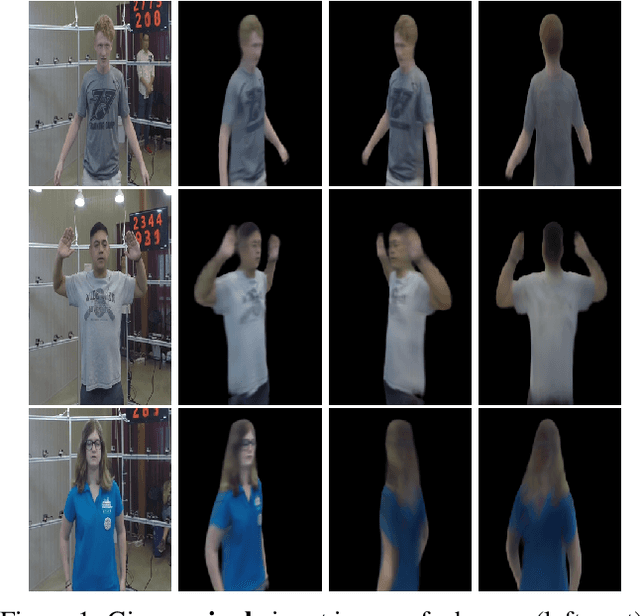
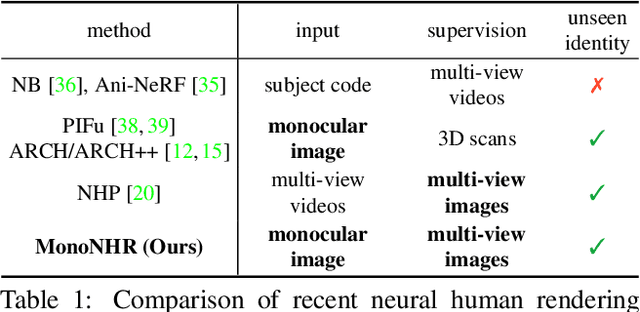
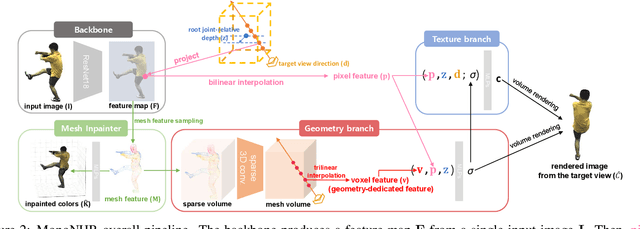

Abstract:Existing neural human rendering methods struggle with a single image input due to the lack of information in invisible areas and the depth ambiguity of pixels in visible areas. In this regard, we propose Monocular Neural Human Renderer (MonoNHR), a novel approach that renders robust free-viewpoint images of an arbitrary human given only a single image. MonoNHR is the first method that (i) renders human subjects never seen during training in a monocular setup, and (ii) is trained in a weakly-supervised manner without geometry supervision. First, we propose to disentangle 3D geometry and texture features and to condition the texture inference on the 3D geometry features. Second, we introduce a Mesh Inpainter module that inpaints the occluded parts exploiting human structural priors such as symmetry. Experiments on ZJU-MoCap, AIST, and HUMBI datasets show that our approach significantly outperforms the recent methods adapted to the monocular case.
Extraction of Coronary Vessels in Fluoroscopic X-Ray Sequences Using Vessel Correspondence Optimization
Jul 28, 2022Abstract:We present a method to extract coronary vessels from fluoroscopic x-ray sequences. Given the vessel structure for the source frame, vessel correspondence candidates in the subsequent frame are generated by a novel hierarchical search scheme to overcome the aperture problem. Optimal correspondences are determined within a Markov random field optimization framework. Post-processing is performed to extract vessel branches newly visible due to the inflow of contrast agent. Quantitative and qualitative evaluation conducted on a dataset of 18 sequences demonstrates the effectiveness of the proposed method.
CADyQ: Content-Aware Dynamic Quantization for Image Super-Resolution
Jul 21, 2022


Abstract:Despite breakthrough advances in image super-resolution (SR) with convolutional neural networks (CNNs), SR has yet to enjoy ubiquitous applications due to the high computational complexity of SR networks. Quantization is one of the promising approaches to solve this problem. However, existing methods fail to quantize SR models with a bit-width lower than 8 bits, suffering from severe accuracy loss due to fixed bit-width quantization applied everywhere. In this work, to achieve high average bit-reduction with less accuracy loss, we propose a novel Content-Aware Dynamic Quantization (CADyQ) method for SR networks that allocates optimal bits to local regions and layers adaptively based on the local contents of an input image. To this end, a trainable bit selector module is introduced to determine the proper bit-width and quantization level for each layer and a given local image patch. This module is governed by the quantization sensitivity that is estimated by using both the average magnitude of image gradient of the patch and the standard deviation of the input feature of the layer. The proposed quantization pipeline has been tested on various SR networks and evaluated on several standard benchmarks extensively. Significant reduction in computational complexity and the elevated restoration accuracy clearly demonstrate the effectiveness of the proposed CADyQ framework for SR. Codes are available at https://github.com/Cheeun/CADyQ.
3D Clothed Human Reconstruction in the Wild
Jul 20, 2022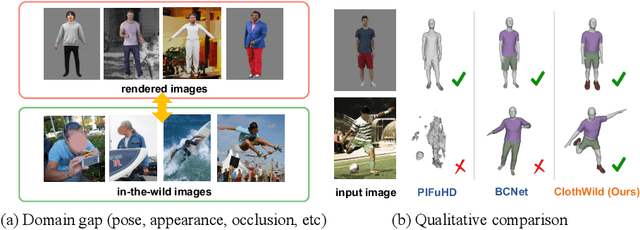
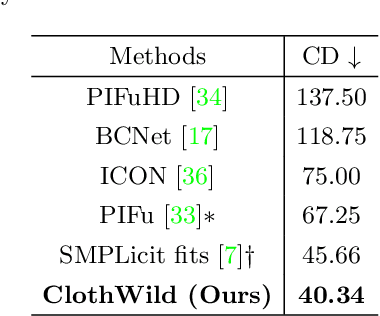


Abstract:Although much progress has been made in 3D clothed human reconstruction, most of the existing methods fail to produce robust results from in-the-wild images, which contain diverse human poses and appearances. This is mainly due to the large domain gap between training datasets and in-the-wild datasets. The training datasets are usually synthetic ones, which contain rendered images from GT 3D scans. However, such datasets contain simple human poses and less natural image appearances compared to those of real in-the-wild datasets, which makes generalization of it to in-the-wild images extremely challenging. To resolve this issue, in this work, we propose ClothWild, a 3D clothed human reconstruction framework that firstly addresses the robustness on in-thewild images. First, for the robustness to the domain gap, we propose a weakly supervised pipeline that is trainable with 2D supervision targets of in-the-wild datasets. Second, we design a DensePose-based loss function to reduce ambiguities of the weak supervision. Extensive empirical tests on several public in-the-wild datasets demonstrate that our proposed ClothWild produces much more accurate and robust results than the state-of-the-art methods. The codes are available in here: https://github.com/hygenie1228/ClothWild_RELEASE.
Controllable Image Enhancement
Jun 16, 2022
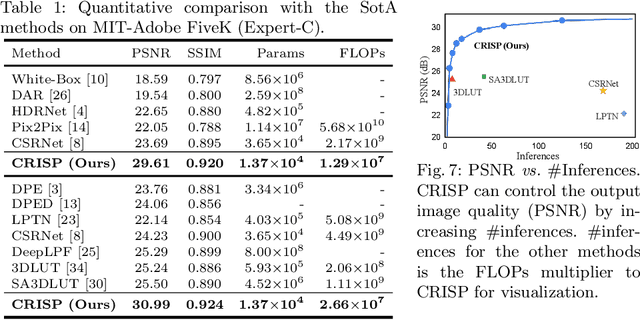


Abstract:Editing flat-looking images into stunning photographs requires skill and time. Automated image enhancement algorithms have attracted increased interest by generating high-quality images without user interaction. However, the quality assessment of a photograph is subjective. Even in tone and color adjustments, a single photograph of auto-enhancement is challenging to fit user preferences which are subtle and even changeable. To address this problem, we present a semiautomatic image enhancement algorithm that can generate high-quality images with multiple styles by controlling a few parameters. We first disentangle photo retouching skills from high-quality images and build an efficient enhancement system for each skill. Specifically, an encoder-decoder framework encodes the retouching skills into latent codes and decodes them into the parameters of image signal processing (ISP) functions. The ISP functions are computationally efficient and consist of only 19 parameters. Despite our approach requiring multiple inferences to obtain the desired result, experimental results present that the proposed method achieves state-of-the-art performances on the benchmark dataset for image quality and model efficiency.
Attentive Fine-Grained Structured Sparsity for Image Restoration
Apr 26, 2022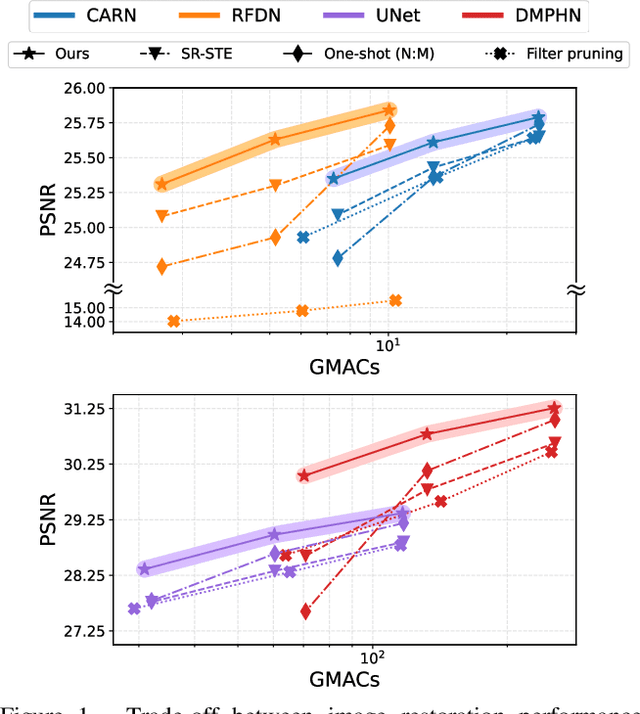
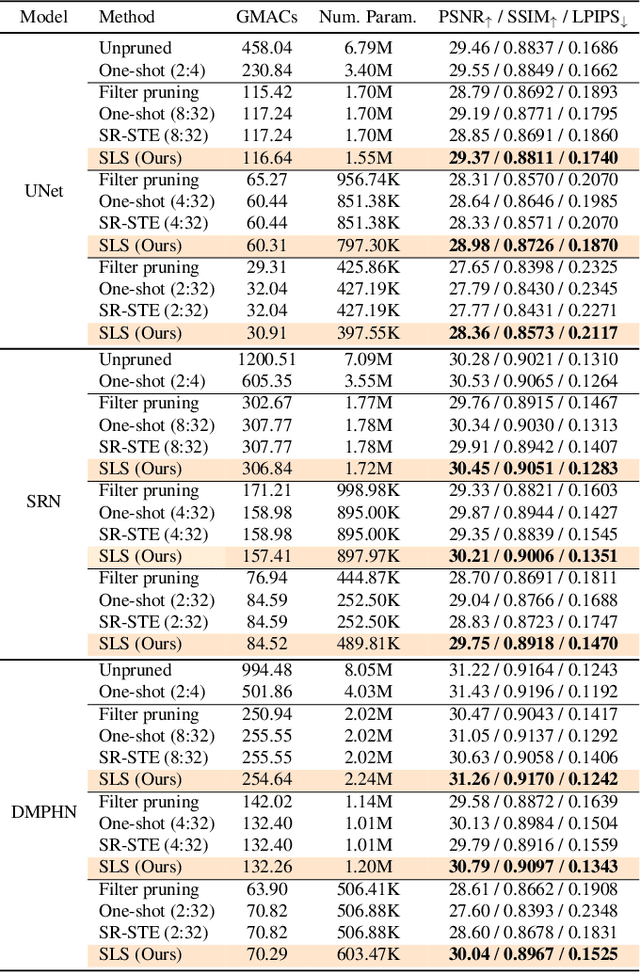
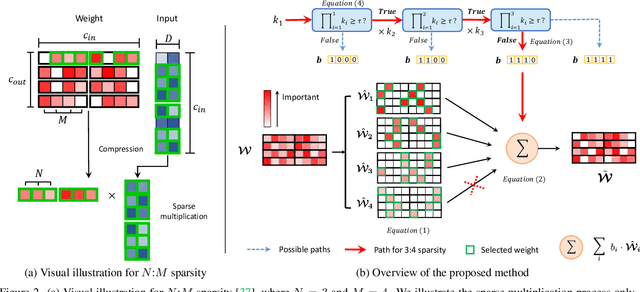
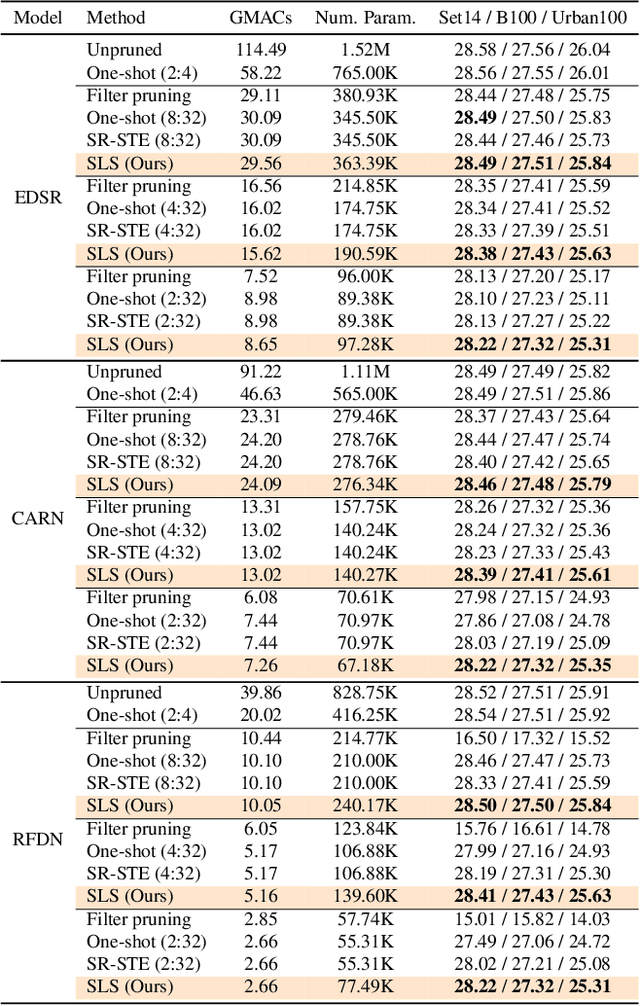
Abstract:Image restoration tasks have witnessed great performance improvement in recent years by developing large deep models. Despite the outstanding performance, the heavy computation demanded by the deep models has restricted the application of image restoration. To lift the restriction, it is required to reduce the size of the networks while maintaining accuracy. Recently, N:M structured pruning has appeared as one of the effective and practical pruning approaches for making the model efficient with the accuracy constraint. However, it fails to account for different computational complexities and performance requirements for different layers of an image restoration network. To further optimize the trade-off between the efficiency and the restoration accuracy, we propose a novel pruning method that determines the pruning ratio for N:M structured sparsity at each layer. Extensive experimental results on super-resolution and deblurring tasks demonstrate the efficacy of our method which outperforms previous pruning methods significantly. PyTorch implementation for the proposed methods will be publicly available at https://github.com/JungHunOh/SLS_CVPR2022.
Pay Attention to Hidden States for Video Deblurring: Ping-Pong Recurrent Neural Networks and Selective Non-Local Attention
Apr 07, 2022
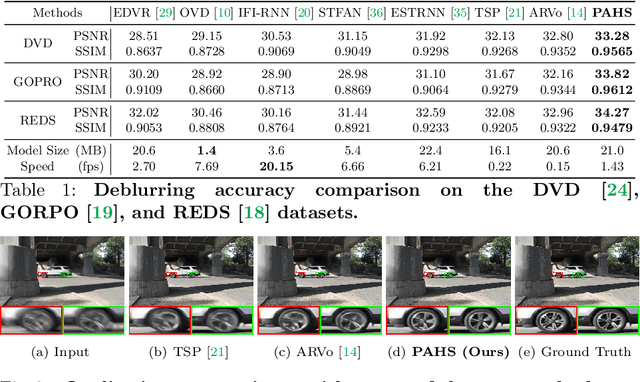
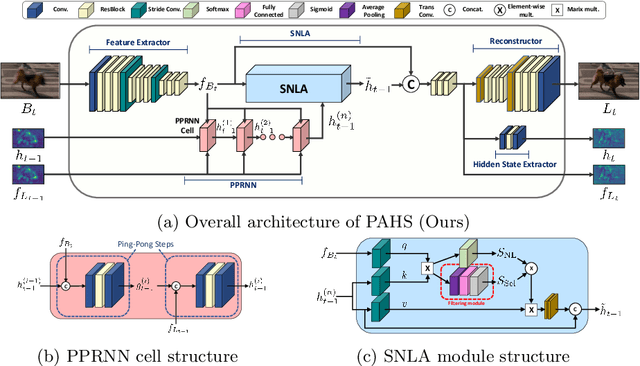
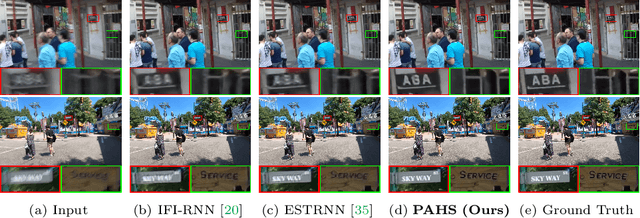
Abstract:Video deblurring models exploit information in the neighboring frames to remove blur caused by the motion of the camera and the objects. Recurrent Neural Networks~(RNNs) are often adopted to model the temporal dependency between frames via hidden states. When motion blur is strong, however, hidden states are hard to deliver proper information due to the displacement between different frames. While there have been attempts to update the hidden states, it is difficult to handle misaligned features beyond the receptive field of simple modules. Thus, we propose 2 modules to supplement the RNN architecture for video deblurring. First, we design Ping-Pong RNN~(PPRNN) that acts on updating the hidden states by referring to the features from the current and the previous time steps alternately. PPRNN gathers relevant information from the both features in an iterative and balanced manner by utilizing its recurrent architecture. Second, we use a Selective Non-Local Attention~(SNLA) module to additionally refine the hidden state by aligning it with the positional information from the input frame feature. The attention score is scaled by the relevance to the input feature to focus on the necessary information. By paying attention to hidden states with both modules, which have strong synergy, our PAHS framework improves the representation powers of RNN structures and achieves state-of-the-art deblurring performance on standard benchmarks and real-world videos.
CVF-SID: Cyclic multi-Variate Function for Self-Supervised Image Denoising by Disentangling Noise from Image
Mar 29, 2022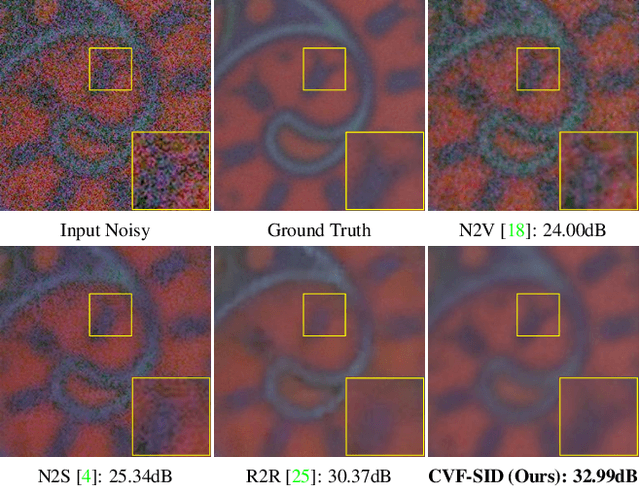
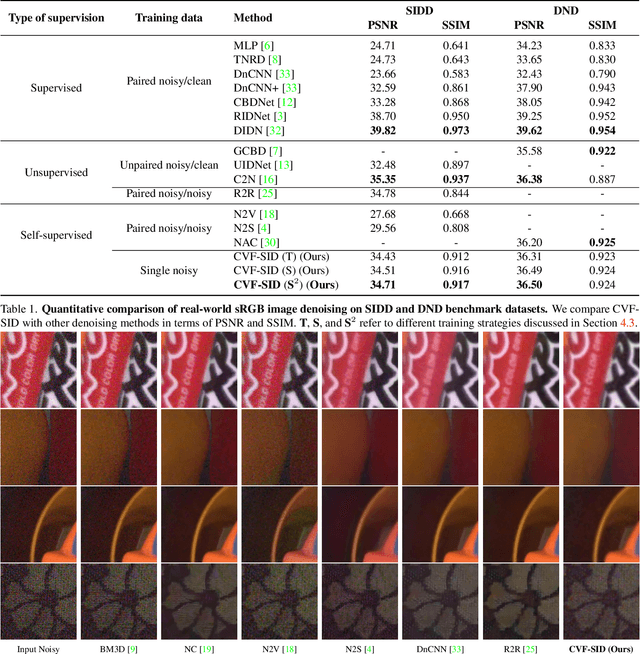
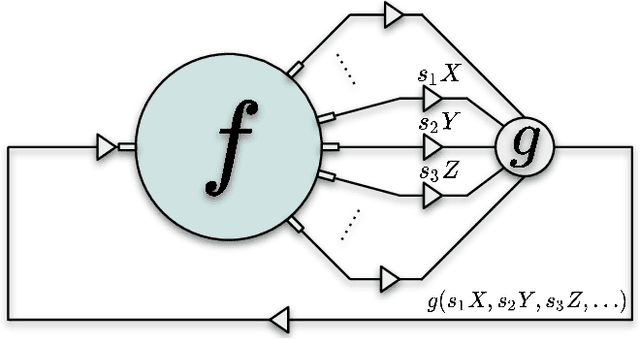
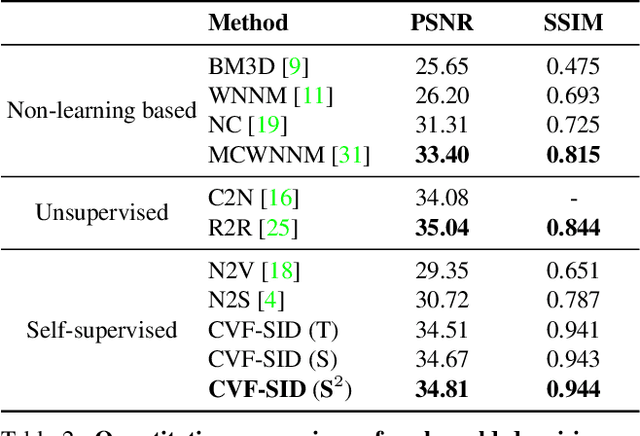
Abstract:Recently, significant progress has been made on image denoising with strong supervision from large-scale datasets. However, obtaining well-aligned noisy-clean training image pairs for each specific scenario is complicated and costly in practice. Consequently, applying a conventional supervised denoising network on in-the-wild noisy inputs is not straightforward. Although several studies have challenged this problem without strong supervision, they rely on less practical assumptions and cannot be applied to practical situations directly. To address the aforementioned challenges, we propose a novel and powerful self-supervised denoising method called CVF-SID based on a Cyclic multi-Variate Function (CVF) module and a self-supervised image disentangling (SID) framework. The CVF module can output multiple decomposed variables of the input and take a combination of the outputs back as an input in a cyclic manner. Our CVF-SID can disentangle a clean image and noise maps from the input by leveraging various self-supervised loss terms. Unlike several methods that only consider the signal-independent noise models, we also deal with signal-dependent noise components for real-world applications. Furthermore, we do not rely on any prior assumptions about the underlying noise distribution, making CVF-SID more generalizable toward realistic noise. Extensive experiments on real-world datasets show that CVF-SID achieves state-of-the-art self-supervised image denoising performance and is comparable to other existing approaches. The code is publicly available from https://github.com/Reyhanehne/CVF-SID_PyTorch .
HandOccNet: Occlusion-Robust 3D Hand Mesh Estimation Network
Mar 28, 2022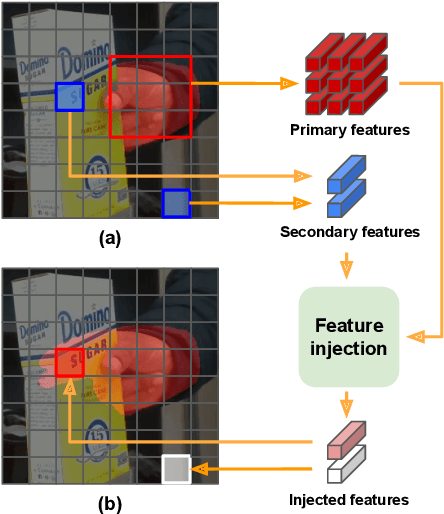
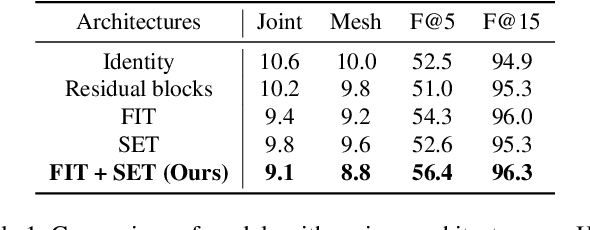


Abstract:Hands are often severely occluded by objects, which makes 3D hand mesh estimation challenging. Previous works often have disregarded information at occluded regions. However, we argue that occluded regions have strong correlations with hands so that they can provide highly beneficial information for complete 3D hand mesh estimation. Thus, in this work, we propose a novel 3D hand mesh estimation network HandOccNet, that can fully exploits the information at occluded regions as a secondary means to enhance image features and make it much richer. To this end, we design two successive Transformer-based modules, called feature injecting transformer (FIT) and self- enhancing transformer (SET). FIT injects hand information into occluded region by considering their correlation. SET refines the output of FIT by using a self-attention mechanism. By injecting the hand information to the occluded region, our HandOccNet reaches the state-of-the-art performance on 3D hand mesh benchmarks that contain challenging hand-object occlusions. The codes are available in: https://github.com/namepllet/HandOccNet.
* also attached the supplementary material
AP-BSN: Self-Supervised Denoising for Real-World Images via Asymmetric PD and Blind-Spot Network
Mar 24, 2022
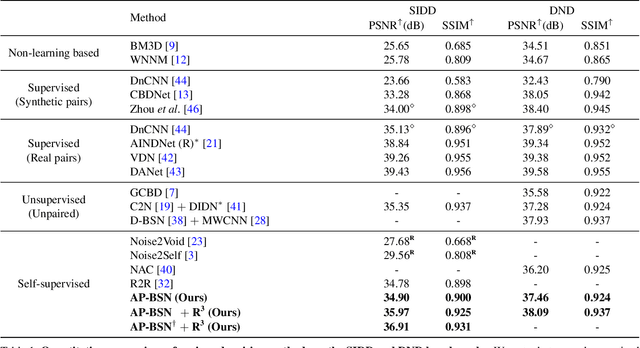
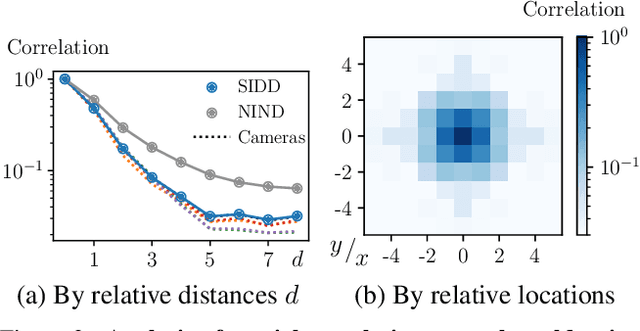
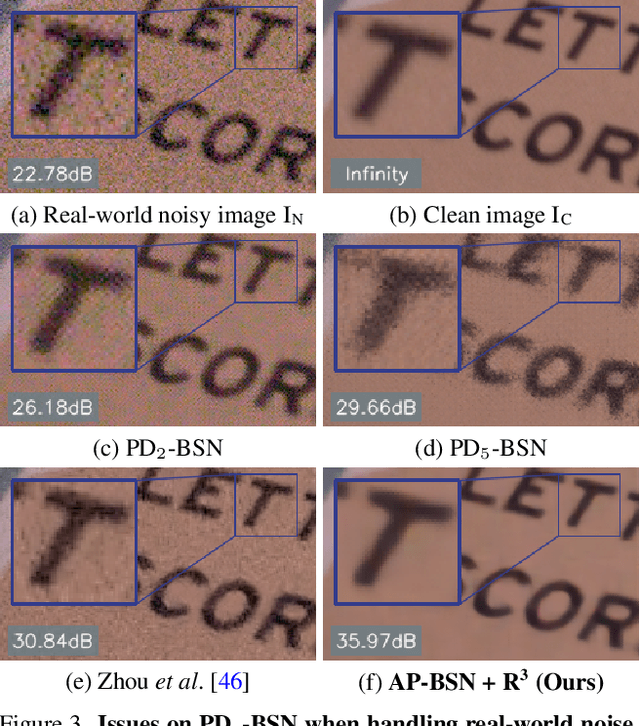
Abstract:Blind-spot network (BSN) and its variants have made significant advances in self-supervised denoising. Nevertheless, they are still bound to synthetic noisy inputs due to less practical assumptions like pixel-wise independent noise. Hence, it is challenging to deal with spatially correlated real-world noise using self-supervised BSN. Recently, pixel-shuffle downsampling (PD) has been proposed to remove the spatial correlation of real-world noise. However, it is not trivial to integrate PD and BSN directly, which prevents the fully self-supervised denoising model on real-world images. We propose an Asymmetric PD (AP) to address this issue, which introduces different PD stride factors for training and inference. We systematically demonstrate that the proposed AP can resolve inherent trade-offs caused by specific PD stride factors and make BSN applicable to practical scenarios. To this end, we develop AP-BSN, a state-of-the-art self-supervised denoising method for real-world sRGB images. We further propose random-replacing refinement, which significantly improves the performance of our AP-BSN without any additional parameters. Extensive studies demonstrate that our method outperforms the other self-supervised and even unpaired denoising methods by a large margin, without using any additional knowledge, e.g., noise level, regarding the underlying unknown noise.
 Add to Chrome
Add to Chrome Add to Firefox
Add to Firefox Add to Edge
Add to Edge